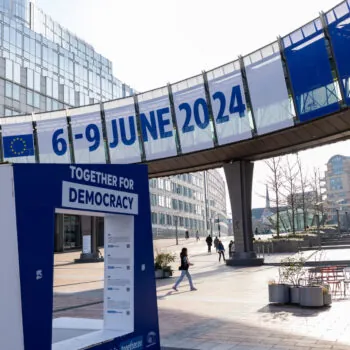The European Commission this week published its long-awaited strategic vision on climate change out to 2050. Jonathan Gaventa, Brussels-based Director of E3G, a think-tank, argues this is a defining moment for the energy transition globally, citing support from all sides including heavy industry, business and investors
This week the European Commission, the EU executive body, published a strategic vision for achieving a climate neutral EU by 2050. Though the document is non-legislative and sets no new binding targets or specific targets, it feels like a turning point for EU climate policy and the clean energy transition.
Under this new vision, the EU will become the first region in the world to reach net zero greenhouse gas emissions, by 2050. Several options were assessed, but the analysis shows a compelling case for aiming for climate neutrality. The economic benefits more than repay the initial investment costs, as Europe moves to a clean, efficient economy. Health benefits alone are estimated at €200 billion per year, as Europe’s unhealthy air becomes cleaner. And €2-3 trillion can be saved by 2050 through avoided fossil fuel imports.
The biggest gains, however, were not modelled in the economic assessment. The real importance of the strategy will be in its contribution to avoiding the most dangerous impacts from climate change, which could become catastrophic to Europe’s economy and society. As the report of the Intergovernmental Panel on Climate Change in October 2018 made clear, each fraction of a degree of warming now matters immensely. The difference between 1.5⁰C and 2⁰C of warming is the difference between the survival of the world’s coral reefs and their extinction, or between the survival of the Greenland ice sheet and its irreversible loss. Climate impacts also matter directly for Europe: last year’s extreme weather events caused €283 billion of economic damages in the EU. Climate-related disasters are set to go from affecting 5% of Europe’s population at present to two-thirds by the end of the century.
Europe is responsible for a relatively small proportion of global emissions, but is a major global actor and the world’s largest consumer market. The climate strategy is designed not only to reduce emissions at home, but also to drive greater climate action from other countries. As well as through the Paris climate agreement process, this can also be achieved by developing new technologies and business models, using trade and competition policy tools and creating new international partnerships.
The new climate neutral goal is particularly significant because it gives a clear steer to the whole economy that it has to get to zero emissions. By contrast, the previous EU 2050 climate roadmap from 2011 aimed at an 80% reduction in emissions, with many countries and sectors assuming they would be able to make use of the remaining 20% of residual emissions, and that the deepest emissions cuts would be borne by others. With a goal of net zero greenhouse gas emissions, it is clear that all sectors and all countries will need to find pathways for full decarbonisation.
The new climate neutral vision also marks a turning point for climate politics. Climate policy has traditionally been marred by a divide between environmentalists on one side and business and industry interests on the other. By contrast, the new climate neutral goal has already received widespread support from a broad range of stakeholders. Before the strategy was produced, major European businesses, investors managing €22 trillion in assets and member states representing more than half of the EU’s population launched public statements in support of the net zero goal.
The climate neutral goal in the strategy has attracted much backing. Heavy industry groups — often cautious on climate policies — have been more positive than in the past. The EU cement lobby announced “we support the Commission in its efforts to meet the Paris agreement objectives”. The chemical industry lobby declared “keep us competitive and we will deliver”, while the glass industry said, “let’s make it happen”.
The launch of the ‘strategic vision’ is only the first step and this broad support will need to be sustained in order to turn the vision of a climate neutral Europe into a reality. Member states and the European Parliament will debate the strategy over the coming months before a final mid-century climate strategy is submitted to the UN in 2020. Intermediate climate milestones, including for 2030, will have to be reviewed. Even once a new 2050 objective is agreed, more focused efforts will be needed to turn the vision into a transformed European economy. This means going beyond traditional climate and energy policy silos and using the full range of tools at the EU’s disposal: research and innovation, industrial strategy, skills and social policy, trade and competition, agriculture, external action, and financial regulation — to name a few. This new agenda starts now.
This article was first published in Foresight: Climate and Energy.


